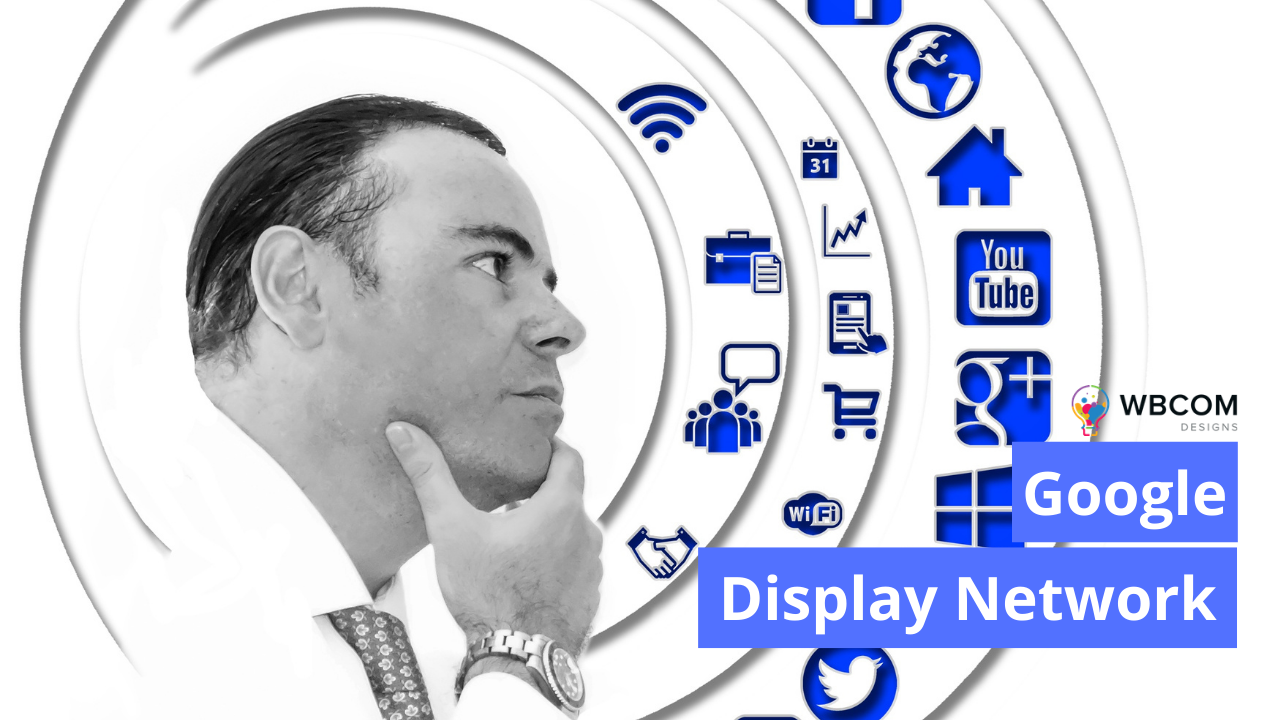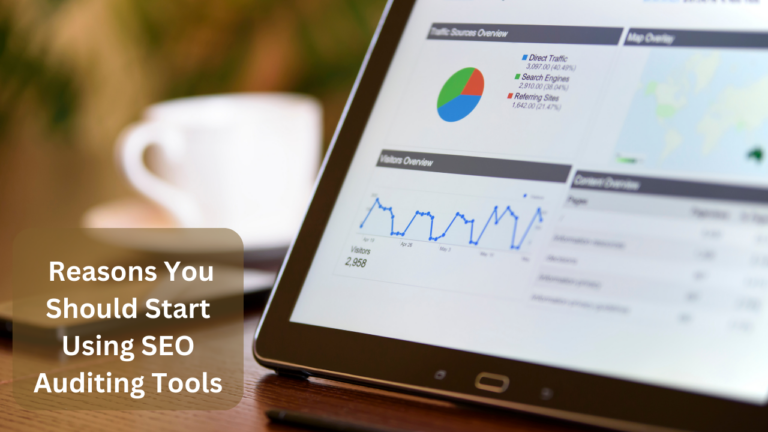Most people who have ever used the internet have seen a Google ad. It’s safe to claim that the advertising efforts have a sizable audience, whether they consist of text ads on search networks or image ads. Millions of websites and apps in the Google Display Network can reach roughly 90% of all internet users.
However, display campaigns are similar to highway billboards in that they catch the attention of many people but may not necessarily represent the target demographic. Making an effective advertisement requires more than just coming up with a catchy slogan and a pretty banner.
Display advertisements, despite their format, employ innovative targeting techniques based on the results of relevant research tools, such as Google Analytics data.
Table of Contents
ToggleWhat is the Google Display Network?
Your display advertising can be seen by your intended audience on the many websites, Google properties (such as Gmail and YouTube), and apps that make up the Google Display Network. Display ads are graphical advertisements that may include your company’s logo, photographs, text, and even animation. That which you produce is the determining factor.
Insights into the Success of Google’s Display Network
One of the elements of digital marketing that is increasingly important to the success of every advertising campaign is Google display ads. It’s safe to assume that many companies have succeeded with this ad style, given the millions of dollars invested in the Google Display Network.
However, reaching out to potential clients requires contextual targeting. In addition, Google Display Network enables firms to fine-tune their targeting options, maximizing the returns on marketing investment.
That is to say; you may choose where your advertising will appear so that it will be seen by people with your target demographic and motivations. For instance, Google Display Network (GDN) advertising can be targeted to appear only on websites that users in a particular demographic and interest category frequently visit.
The design of visual ad formats like GDN advertising can be modified in a variety of ways. This is the place to experiment with different layouts, colors, fonts, images, and graphics to attract the attention of potential customers.
Also Read: Best Twitter Marketing Tools
A Comparison of Google’s Display and Search Networks
Search and Display are the two types of ad networks available in Google AdWords. Ads placed through the Google Search Network appear on Google’s trusted search engine, allowing you to reach users precisely when they’re searching for a product or service you’re offering. These appear in the natural search results on Google and, as shown in the following example, have a little more call-to-action content than is typical in search campaigns.
While the Ad Exchange actively seeks out new customers, the Display Network takes a more backseat approach. It places your adverts on carefully selected websites, where people can see them while they surf the web for entertainment or purchase goods.
Because the human brain processes only 10% of the information it receives through its sense of sight, the ability to use visual and rich media advertisements instead of just text ones can be a game-changer in and of itself.
How Google Display Network ads reach their target audience
Knowing the numerous targeting choices before developing display advertising will allow you to reach the broadest possible audience. Well, let’s go over a few of them:
1. Affinity Audiences

You’ll find people already interested in the products or services you’re advertising in Google’s affinity groups. Anything from cosmetics and music to adventures abroad could fall within this category. Therefore, the ad may reach the intended audience if the business promotes itself as a concert hall or festival hosting musical acts.
It is essential to remember that broad, ill-defined default categories can be more expensive and time-consuming than you anticipate. The better strategy is to divide your preferences into more specific groups.
If the main draw of the music festival is a jazz event, for instance, your ad should be geared toward jazz aficionados. As a bonus, you may employ other marketing methods to deepen comprehension of the unique affinity groups that might boost conversion rates and sales.
One possible tool for this is Google Analytics. You can also use Google Analytics’s data to target a “similar” audience on Google Ads.
Also Read: Planning to Start a Forum? Ask These Questions to Yourself
2. In Target Markets/Audiences

The term “in-market segments” describes groupings of consumers located within the same market as the goods and services you are selling. These are typically extensive classification systems with thousands or millions of granular levels. User behavior on other websites, such as search queries, clicks, and conversion rates, are used to classify local market groups.
The protein powder market, for instance, can include Googlers who are also keen on maintaining a healthy and active lifestyle. So, a visitor searching for athletic shoes might see your display ad for protein powders, which isn’t great for increasing sales.
Advertisers can limit their reach by selecting specific demographics and interests from available targeting options. While some guesswork is acceptable during testing, making judgments based on data from Google Analytics will prove fruitful in the long run.
Also Read: Eleven Useful Sites To Find A Hashtag For Social Media
3. Targeting by demographics
Combining custom affinities with demographic qualifiers may narrow your audience and boost your campaign’s effectiveness. You can check your audience by categorizing them based on gender, financial level, native tongue, or age.
For an all-female Pilates studio, you may exclude male demographic targets in your advertising.
Also Read: The 11 Best Web Designing Software
4. Remarketing
Remarketing is an excellent strategy for reaching out to previous customers and gaining their interest in new offerings. This tactic differs from the others because it focuses on those who have already interacted with your brand.
Remarketing audiences, on the other hand, are people who have previously visited your website and performed actions like watching videos, downloading files, or making purchases. There’s a chance they only glanced at the website and didn’t do anything at all.
However, it should be noted that many companies rely on display advertising to spread their brand name and attract customers who may not be familiar with them.
Also Read: Choosing a Web Hosting Company
5. Specific Target Groups
Contextual links are used to identify custom intent audiences. If you want your ad to be shown to people who will find it helpful, Google will find them for you.
Enter search terms, links to relevant websites, and app names that you think your audience may find interesting. However, the websites you specify or those that utilize the exact keywords won’t be the only places your advertising will appear. Google, instead, works in the background to decipher the signals and place your ad next to relevant content based on your campaign’s objectives.
6. Topical Specificity
As your ads will be displayed on sites frequented by people who share your interests, the people you reach with topic targeting may also fall into the affinity and in-market categories. But with topic targeting, marketers can zero in on a specific subset of the population and expand their reach beyond Google’s predefined niches.
Also Read: Web Development Wireframe Tool That Enhances Your Design
7. Placement Aiming
Targeting people where they spend time online is one of the most effective ways to manipulate that audience. Ads can be shown on specific pages of the GDN or YouTube channels by using this targeting feature.
This tactic is excellent for limiting unwanted site visitors and saving money on ineffective ad bids. The success of a campaign, however, depends on the marketer’s certainty that the intended customers will go to the recommended website. However, managed placements restrict reach, decreasing the likelihood of your ad appearing on popular, high-traffic websites.
Also Read: What is the “People Also Ask” Box And How to Rank in Google for it?
Conclusion
The Google Display Network is a component of the larger digital marketing ecosystem. Don’t take your own life on your way into the GDN. Begin with a small Display campaign to get a feel for the GDN before launching any massive campaigns.
Intersting Reads:
How To Use Google Ads For Your Business – Complete Guide
Twelve Essential WooCommerce Extensions For Every Marketplace Owner








